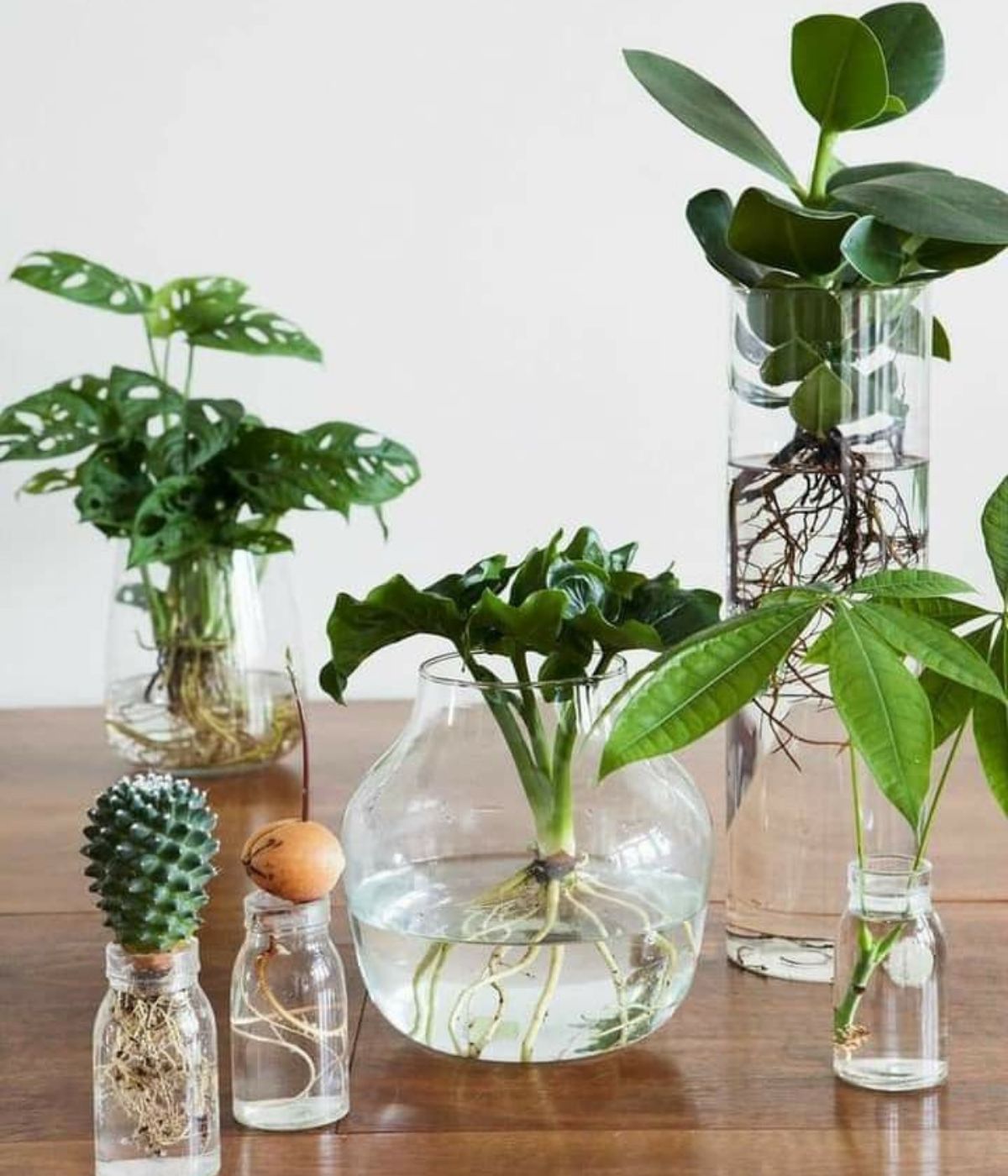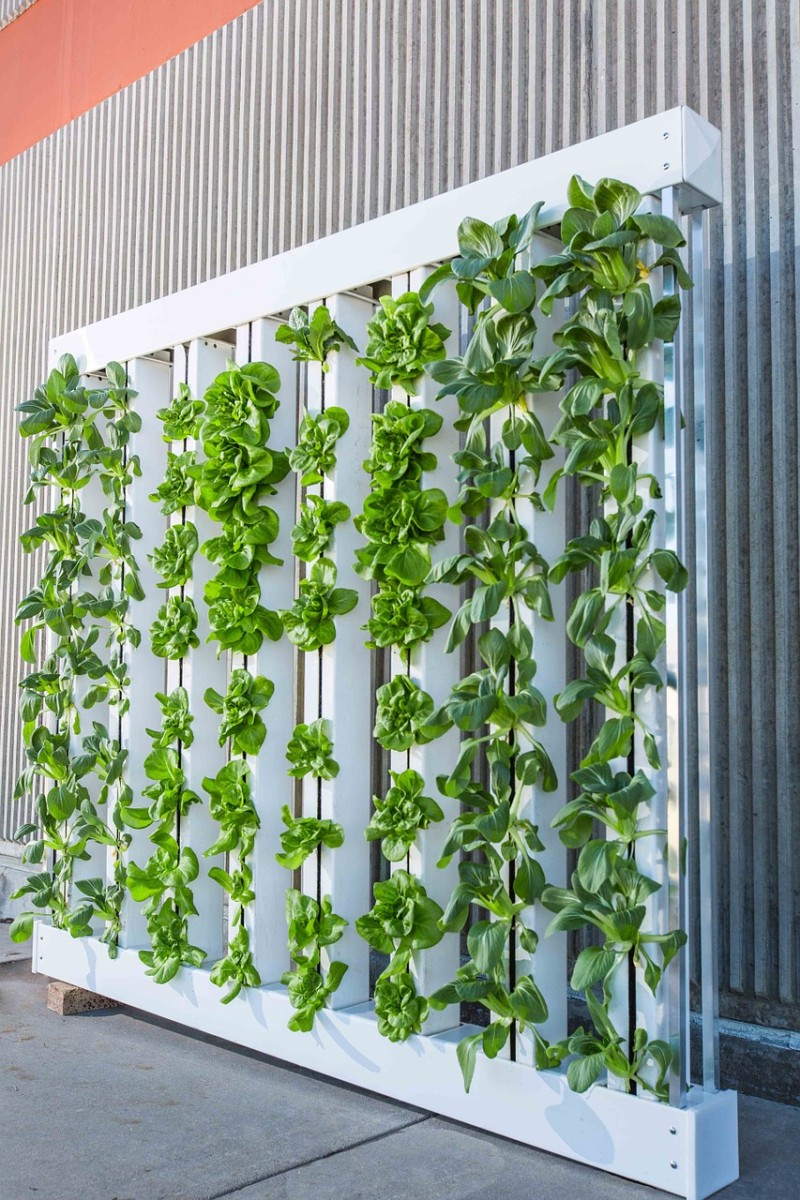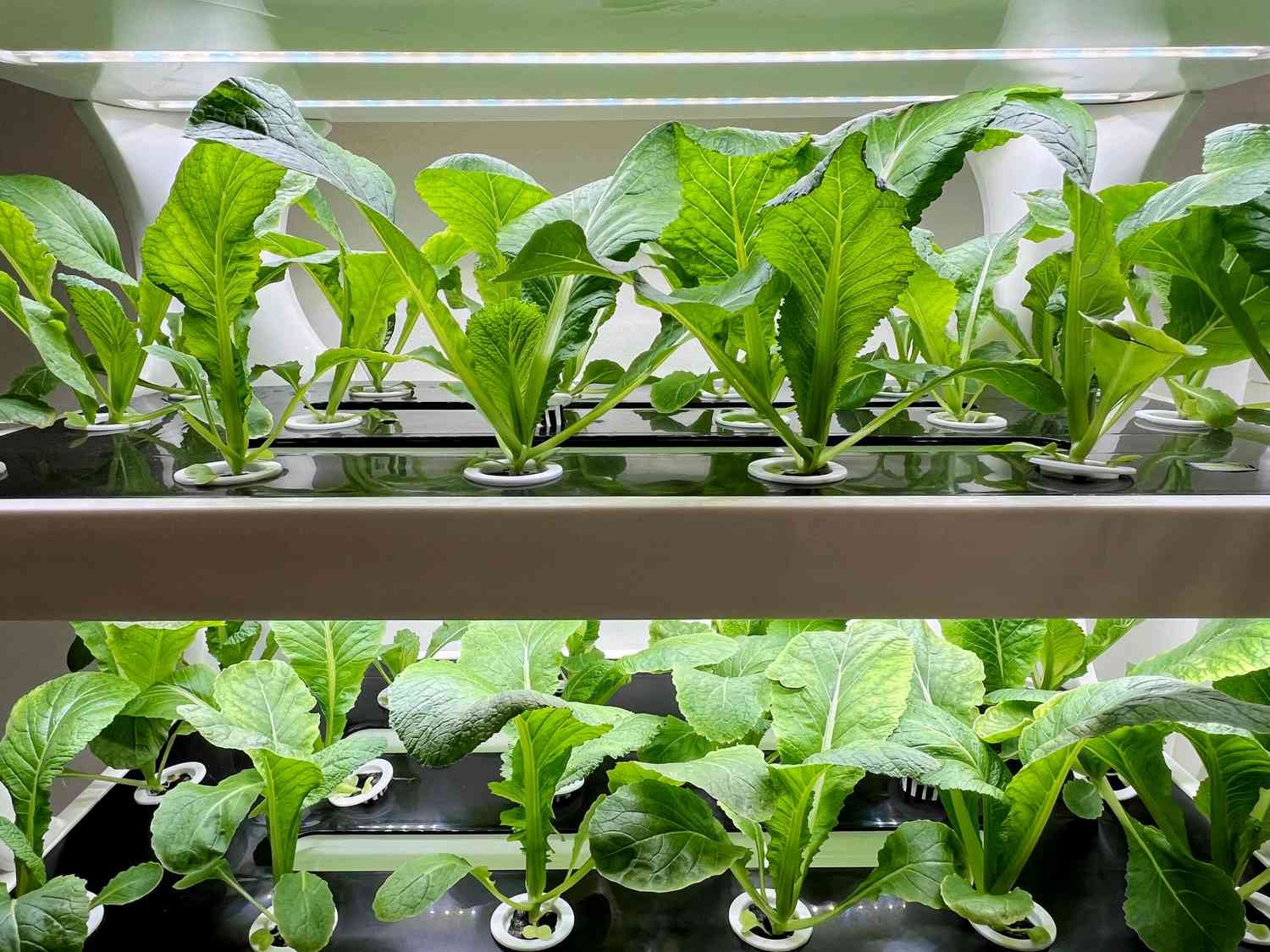Hydroponics is a method of growing plants without soil. It’s efficient and space-saving.
But which plants thrive best in this system? Hydroponics offers a sustainable way to grow fresh produce. Plants grow faster and use less water compared to traditional farming. This method is perfect for urban gardeners or those with limited space.
The right plants can make your hydroponic garden successful. Understanding which plants are best suited for hydroponics can help you get started on the right foot. Whether you want to grow herbs, vegetables, or fruits, there are many options. Each plant has its own needs and benefits. Ready to explore the best plants for hydroponics? Let’s dive in!

Credit: matsuoutdoorsmanshow.com
Introduction To Hydroponics
Hydroponics is changing the way we grow plants. This method uses no soil. Instead, plants grow in a nutrient-rich water solution. It is perfect for those who want to grow fresh plants indoors. Let’s dive into the world of hydroponics and learn more.
What Is Hydroponics?
Hydroponics is a way to grow plants without soil. The plants get their nutrients from water mixed with minerals. This method can be done indoors or outdoors. It saves space and water. The roots of the plants are directly exposed to the nutrient solution. This helps the plants grow faster and healthier.
Benefits Of Hydroponic Gardening
- Faster Growth: Plants grow up to 50% faster than in soil.
- Less Water: Uses up to 90% less water than traditional gardening.
- Space-Efficient: Ideal for small spaces and urban settings.
- No Weeds: No soil means no weeds to pull.
- Fewer Pests: Reduces the risk of pests and diseases.
- Control: You control the nutrients and environment.
Hydroponic systems come in various types. Some popular ones include Deep Water Culture, Nutrient Film Technique, and Aeroponics. Each has its own pros and cons. Choosing the right one depends on your needs and space.
Starting with hydroponics might seem hard. But it is easier than you think. With the right setup, you can grow fresh herbs, vegetables, and even fruits. All from the comfort of your home.
Leafy Greens
Hydroponics is a great way to grow leafy greens. These plants thrive in water-based environments. They are easy to care for and grow quickly. Let’s explore some popular leafy greens.
Lettuce Varieties
Lettuce is a favorite in hydroponics. It grows fast and stays fresh. There are many varieties to choose from:
- Butterhead Lettuce: Soft leaves and a mild flavor.
- Romaine Lettuce: Crisp texture and rich in nutrients.
- Iceberg Lettuce: Crunchy and refreshing.
- Leaf Lettuce: Loose leaves, easy to harvest.
Lettuce needs a pH level of 6.0 to 6.5. Ensure good light and nutrient supply. Harvest in 30 to 40 days.
Spinach
Spinach is another excellent leafy green for hydroponics. It is rich in vitamins and minerals. Spinach prefers cooler temperatures. Here are some tips for growing spinach:
- pH Level: Maintain a pH of 6.0 to 7.0.
- Light: Provide 12 to 14 hours of light daily.
- Temperature: Keep the temperature between 65°F and 70°F.
Spinach can be harvested in 30 to 40 days. Regularly check for pests and diseases. Enjoy fresh and healthy spinach from your hydroponic garden.
Herbs
Growing herbs hydroponically is a great option for beginners. Herbs thrive in hydroponic systems and provide fresh flavors for your kitchen. Here are three popular herbs to grow hydroponically.
Basil
Basil is a favorite herb for hydroponics. It grows fast and has a delightful aroma. Basil prefers warm temperatures and plenty of light. Ensure your hydroponic system provides at least 14 hours of light daily.
- Temperature: 65-85°F
- Light: 14-16 hours per day
- pH Level: 5.5-6.5
Basil is a versatile herb. Use it in pastas, salads, and pestos.
Mint
Mint is another excellent choice for hydroponics. It grows quickly and is easy to manage. Mint requires moderate light and cooler temperatures compared to basil.
- Temperature: 55-70°F
- Light: 12-14 hours per day
- pH Level: 6.0-7.0
Mint is perfect for teas, desserts, and even cocktails. Its refreshing taste enhances many dishes.
Cilantro
Cilantro is a popular herb in many cuisines. It grows well in hydroponic systems with cooler temperatures. Cilantro needs shorter periods of light compared to basil and mint.
- Temperature: 50-75°F
- Light: 10-12 hours per day
- pH Level: 6.5-7.5
Cilantro adds a unique flavor to dishes. Use it in salsas, curries, and garnishes.

Credit: brightlanegardens.com
Fruiting Plants
Hydroponics is a great way to grow fresh fruits at home. Fruiting plants thrive in hydroponic systems. They produce delicious, juicy harvests. Let’s explore some of the best fruiting plants for hydroponics.
Tomatoes
Tomatoes are a popular choice for hydroponic gardening. They grow well in nutrient-rich water. Here are some tips for growing tomatoes hydroponically:
- Use a nutrient solution with high potassium levels.
- Provide 8-10 hours of light daily.
- Maintain the pH level between 5.5 and 6.5.
Hydroponic tomatoes can be grown in various systems, including:
- Deep Water Culture (DWC)
- Nutrient Film Technique (NFT)
- Drip Systems
Tomatoes in hydroponics can produce high yields with proper care. Choose varieties like cherry tomatoes or beefsteak tomatoes for best results.
Peppers
Peppers are another excellent choice for hydroponic systems. They come in various types, including bell peppers and hot peppers. Here are some key points for growing peppers hydroponically:
- Use a balanced nutrient solution.
- Provide 10-12 hours of light daily.
- Maintain the pH level between 6.0 and 6.5.
Hydroponic peppers can be grown in systems such as:
- Deep Water Culture (DWC)
- Flood and Drain (Ebb and Flow)
- Drip Systems
Peppers need support as they grow. Use stakes or cages to keep them upright. Select varieties like jalapeños or bell peppers for a rewarding harvest.
Root Vegetables
Root vegetables thrive in hydroponic systems. They need less space and grow quickly. These plants are perfect for small gardens. Let’s explore some popular choices.
Radishes
Radishes grow well in hydroponic setups. They mature fast and are easy to care for. You can harvest them in as little as three weeks. Their small size makes them ideal for tight spaces.
Carrots
Carrots also do well hydroponically. Use deep containers to allow their roots to grow. This ensures they develop properly. Carrots take longer to mature but are worth the wait. They are rich in vitamins and add color to your meals.
Exotic Options
Hydroponics offers a fantastic way to grow a variety of plants. For those seeking something different, consider exotic options. These plants not only thrive in hydroponic systems but also bring unique flavors and visuals to your garden.
Strawberries
Strawberries are a popular choice for hydroponic gardening. They produce sweet, juicy fruits. The plants grow quickly and are easy to maintain. With the right nutrients and lighting, you can enjoy fresh strawberries year-round.
Hydroponic strawberries often have fewer pests and diseases. This means healthier plants and better yields. The controlled environment allows for optimal growth conditions. This results in delicious, high-quality fruits.
Blueberries
Blueberries also make an excellent addition to your hydroponic garden. They require more care and attention but reward you with tasty berries. Blueberries thrive in acidic conditions. This can be easily managed in a hydroponic setup.
These plants need a longer growing period. Yet, the wait is worth it. Blueberries offer a wealth of health benefits. They are rich in antioxidants and vitamins. Growing them hydroponically ensures they get the best possible care.
Tips For Successful Hydroponic Gardening
Hydroponic gardening is a soil-free method of growing plants, which can be very rewarding. To ensure success, it’s important to understand the basics. Here are some tips to help you with hydroponic gardening.
Lighting Requirements
Lighting is crucial in hydroponic gardening. Plants need light to grow. Use LED or fluorescent lights as they are energy-efficient. Aim for 14-16 hours of light daily. Ensure the lights are not too close to the plants, which can cause burns. Adjust the light distance as plants grow.
Nutrient Solutions
Nutrient solutions are the lifeblood of hydroponic systems. They provide essential minerals and nutrients to the plants. Use a balanced nutrient solution specific to hydroponics. Monitor the pH level, keeping it between 5.5 and 6.5 for most plants. Below is a table with common nutrient solutions and their recommended concentrations:
| Nutrient | Concentration (ppm) |
|---|---|
| Nitrogen (N) | 100-200 |
| Phosphorus (P) | 30-50 |
| Potassium (K) | 100-200 |
| Calcium (Ca) | 80-100 |
| Magnesium (Mg) | 30-50 |
Check the nutrient solution weekly. Replenish as needed to maintain the correct levels. This ensures your plants get the nutrients they need to thrive.

Credit: bhi.edu
Common Challenges
Hydroponics offers a unique way to grow plants without soil. Yet, it comes with its own set of challenges. Managing pests and diseases is critical for healthy plant growth. These issues can disrupt your hydroponic system. This section will cover common challenges and how to address them.
Pest Control
Pests can invade your hydroponic setup, even indoors. Common pests include aphids, spider mites, and whiteflies. These tiny invaders can damage your plants. Regular monitoring is essential. Inspect leaves and roots for signs of infestation. Use natural predators like ladybugs to control pests. Neem oil is also effective. Keep your growing area clean to prevent pests.
Disease Management
Diseases can spread quickly in a hydroponic system. Fungal infections, root rot, and mildew are common issues. To manage diseases, maintain proper water and air circulation. Ensure your nutrient solution is balanced. Remove and isolate infected plants immediately. Sterilize tools and equipment regularly. Using disease-resistant plant varieties can also help. Keep humidity levels in check to avoid mold and mildew.
Frequently Asked Questions
What Are The Easiest Plants To Grow Hydroponically?
Lettuce, spinach, and herbs like basil are the easiest to grow hydroponically. They require minimal maintenance and grow quickly. These plants are ideal for beginners and provide a steady yield.
Can Tomatoes Be Grown Hydroponically?
Yes, tomatoes can be grown hydroponically. They thrive in nutrient-rich water and controlled environments. With proper care, hydroponic tomatoes produce abundant, high-quality fruit.
Which Herbs Are Best For Hydroponics?
Basil, mint, and parsley are the best herbs for hydroponics. They grow quickly, need minimal space, and offer fresh flavors year-round.
Is Hydroponic Gardening Expensive?
Hydroponic gardening can be cost-effective. Initial setup costs can be high, but long-term savings on water and soil make it economical.
Conclusion
Choosing the right plants for hydroponics boosts growth and yields. Leafy greens like lettuce and spinach thrive well. Herbs such as basil and mint are also excellent choices. Tomatoes and cucumbers can be very productive in hydroponic systems. Experiment with different plants to see what works best for you.
Hydroponics offers many benefits, including faster growth and higher yields. Start small, learn, and expand as you gain confidence. Happy gardening!





